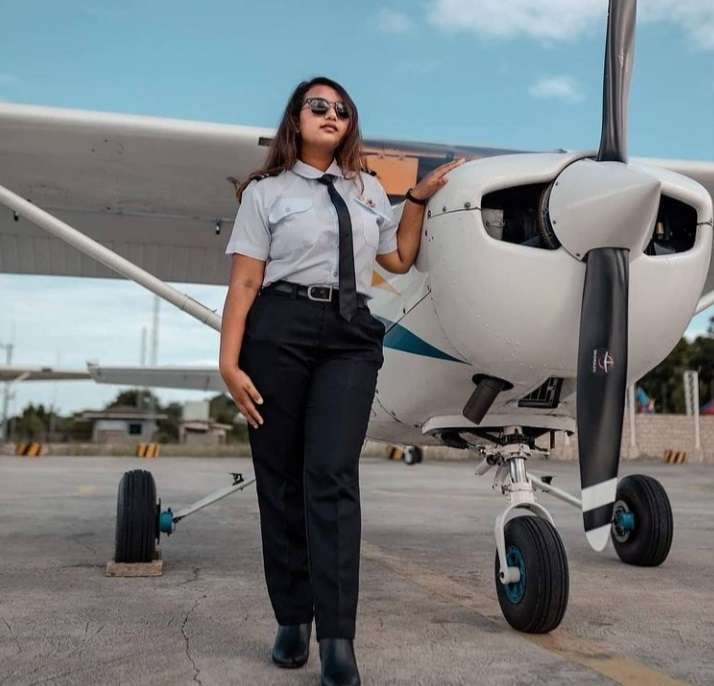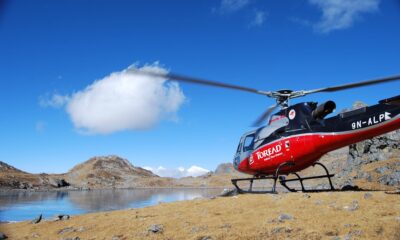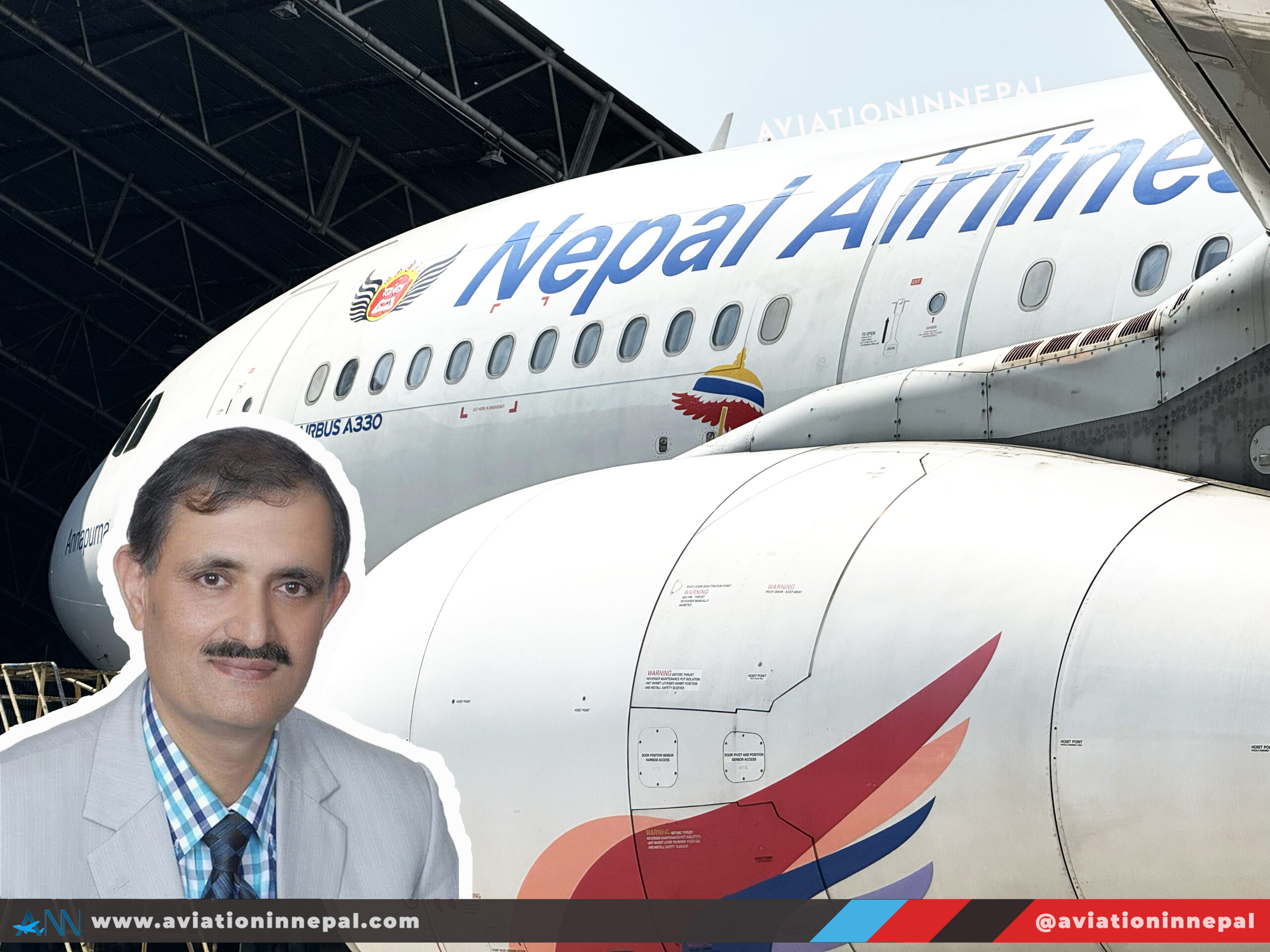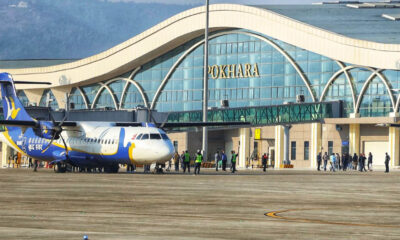AVIATION
How to become a Pilot in Nepal?
Here are ten things you need to know about the pilot study from Nepal if you want to become a pilot in Nepal.
Published
4 months agoon
By
Gems Sierra
Here are ten things you need to know about the pilot study from Nepal if you want to become a pilot in Nepal.
By Karan Bhatta
A salary that is more than handsome. The opportunities to travel the globe. Great social standing. And a lot of duties to go along with it. Such are the perks of becoming a pilot. But becoming a pilot does entail challenging and comprehensive training. And with it, the dedication of substantial time and money. If you become a respected figure in the piloting community, it might entail extensive research. But that’s after you have decades of experience.
Here are ten things you need to know about the pilot study from Nepal if you want to become a pilot in Nepal.
And if you stick to the end, you’ll get some bonuses too!!
1. What Qualifications do you need to become a pilot from Nepal?
The first thing that comes to mind when looking to become a pilot in Nepal is eligibility. If you’re looking to cross the eligibility barrier for training to obtain a private pilot certificate, you must be at least 17 years old. To register for commercial pilot license training, you must be at least 18.
Regarding educational requirements, high school completion, i.e., +2 in the sciences with Physics and Mathematics from the Nepal Education Board, is a must. A Bachelor’s degree or even a Master’s is not essential. But it might help push your application a lot higher when you’re vying for a particular position in the aviation community.
2. And what about the Medical requirements?
A pilot is in charge of an aircraft and the lives of passengers. A pilot needs to be physically and mentally fit to take care of both these facets. To demonstrate that you’re healthy, you need to clear medical examinations conducted by practitioners who have been approved by the Civil Aviation Authority of Nepal (CAAN).
If you’re looking to obtain a Commercial Pilot License (CPL) or an Airline Transport Pilot License (ATPL), you must possess a Class 1 medical certificate. The certificate testifies that your heart, chest, ears, eyes, and other parts are functioning well. In addition, the test will also ensure that other indicators of a healthy body, such as blood pressure, blood chemistry, and urine, adhere to healthy standards.
3. Picking the right Flight schools for your pilot study
Your qualifications and the passing of your medical examinations won’t come into the picture if you don’t sign up for a recognized flight school. Due to an absence of flight schools, ambitious Nepalese pilots are forced to travel abroad for pilot training every year.
CAAN has listed and examined Approved Training Organizations (ATOs) in which you can get enrolled for piloting training. You can visit the flight safety department of CAAN which lies in Sinamangal to learn more about the ATOs.
Picking the best flying school is not easy, as countries such as the US, Canada, Australia, South Africa, and the Philippines have been the go-to places for pilot training. It is advised to pick flight schools that provide rigorous pilot training at an affordable price, has experienced flight instructors, and have suitable flying weather locations while selecting a foreign country for the pilot study.
Note: A non-Nepalese piloting license cannot directly be converted to a local license to operate for Nepalese airline businesses because CAAN does not accept such licenses.
4. Taking the Cost of the pilot study into consideration
Before enrolling in flight training, you must consider the Cost of enrolling. Being a pilot can cost as much as NPR 10.2 million or as little as NPR 4 million, depending on the flying school and the nation.
If money is not a significant concern, you can pursue flight instruction in expensive nations like the US, Canada, and Australia, where the average pilot course costs over $70000. Otherwise, the majority of Nepalese students pursue pilot studies abroad in nations like South Africa and the Philippines, where they may enroll in a flying course for between $45,000 and $55,000 USD and live in an affordable environment.
5. What type of pilot do you aspire to be?
Although flying an aircraft is the same for all pilots, their flying licenses vary in terms of their Scope, character, and intended use. Private, commercial, airline transport, balloon, and glider pilot licenses are among the different kinds of pilot licenses that can be obtained in Nepal.
Let’s say you wish to operate an aircraft for non-commercial activities, such as to fly alone, transport your family to far-off locations, or just for fun. A private pilot license (PPL)would be your best choice in such cases. Given that owning jets privately for recreation has not been fostered in Nepal, a PPL might be redundant for most.
On the other hand, a Commercial pilot license (CPL) allows you to transport people and goods. A CPL would also help you get paid. To advance your career path into major Nepalese airlines like Nepal Airlines, Himalaya Airlines, etc., you will need an Airline Transport Pilot License (ATPL). To operate as a first officer in Nepali Airlines, one must have at least a frozen ATPL (CPL license plus a passing score on the ATPL theory exam).
6. Prepare for your License conversion.
The provision of license conversion by the aviation regulatory agency is another matter that you need to consider. The aviation authority of the country where you pursue piloting (in the US, this would be the Federal Aviation Administration FAA) will review you following the conclusion of your flight training before issuing a pilot license.
Before flying an aircraft with a Nepalese registration in Nepal, you must pass the written test for the license conversion and have a Nepali pilot’s license issued by the CAAN. Prior to conversion to a Nepalese license, the Nepalese civil aviation regulator will assess the foreign license or certificate granted by the contracting State for compliance with ICAO Annex 1.
7. Adhering to Flying rules and regulations
Even after passing the last test and obtaining a Nepalese license, there are still a number of flying laws and guidelines that you should be aware of and adhere to. The ability to act as a pilot-in-command or co-pilot of an airplane, helicopter, or powered lift requires an appropriate type rating.
The CAAN also stipulates a guideline regarding license validity. The Civil Aviation Authority of Nepal has given a pilot license that complies with all relevant standards, including the validity of the medical certificate, which is good for five years. PPL, CPL, ATPL, balloon, and glider pilot licenses are all covered by these licenses. However, owners of a Microlight/Ultralight Pilot License are required to renew it annually.
8. Wondering about the Salary of a pilot in Nepal?
Pilots get paid hourly. How much they get paid depends on their experience, the routes they fly, and the airlines they are contracted with. A senior pilot in Nepal who flies on international routes can expect to get a gross monthly income of Rs 600,000. The co-pilot typically makes Rs 400,000. The senior pilot and co-pilot flying the airliner on domestic networks make up to Rs 400,000 and Rs 190,000, which might be thought of to be modest.
9. What is the Scope of pilots in Nepal?
The good news is that Nepal’s airline fleet capacity and route networks are gradually growing. There are two or three new airlines that are expected to start operating in our country. As air travel is getting more accessible in Nepal, the number of passengers is expected to rise too. And that will, in turn, put pressure on the airlines to add new aircraft to their fleet. Contrary to the few carriers in the past, the air situation is improving every day as new players enter the airline industry.
10. What Flight privileges are Pilots in Nepal expected to receive?
Nepal accords skilled pilots with a specific level of societal esteem alongside other benefits such as the chance to travel, a competitive wage, health and insurance benefits, family flying discounts and freebies, etc. Pursuing the piloting profession in aviation can make your goal of holding office in the skies a reality. Knowing these ten facts about Nepalese pilot studies will help you take advantage of flight training and prepare for your future career.
To Round Up

If you are an aspiring pilot, please contact Aviotrace Nepal School of Technology, Old Baneshwor. They are wiling to give you 10 hours of flight simulator training. This comes alongside Pilot Ground Classes and an opportunity to work as an intern at Aviation in Nepal.
You may like
-


CAAN preparing to ground a Simrik Air Pilot for Safety Negligence.
-


Flights resume in Tumlingtar Airport after 2 weeks of disruption
-


Nepal Airlines chairperson under suspicion of corruption related to Airbus A320 engine maintenance
-


Mahendranagar Airport reconstruction delayed by Environmental issues
-


Flights resume at Pokhara International Airport after a week
-


Airbus Day Organized by Airbus at IOE Pulchowk Campus opens-up direct access for Nepali graduates

